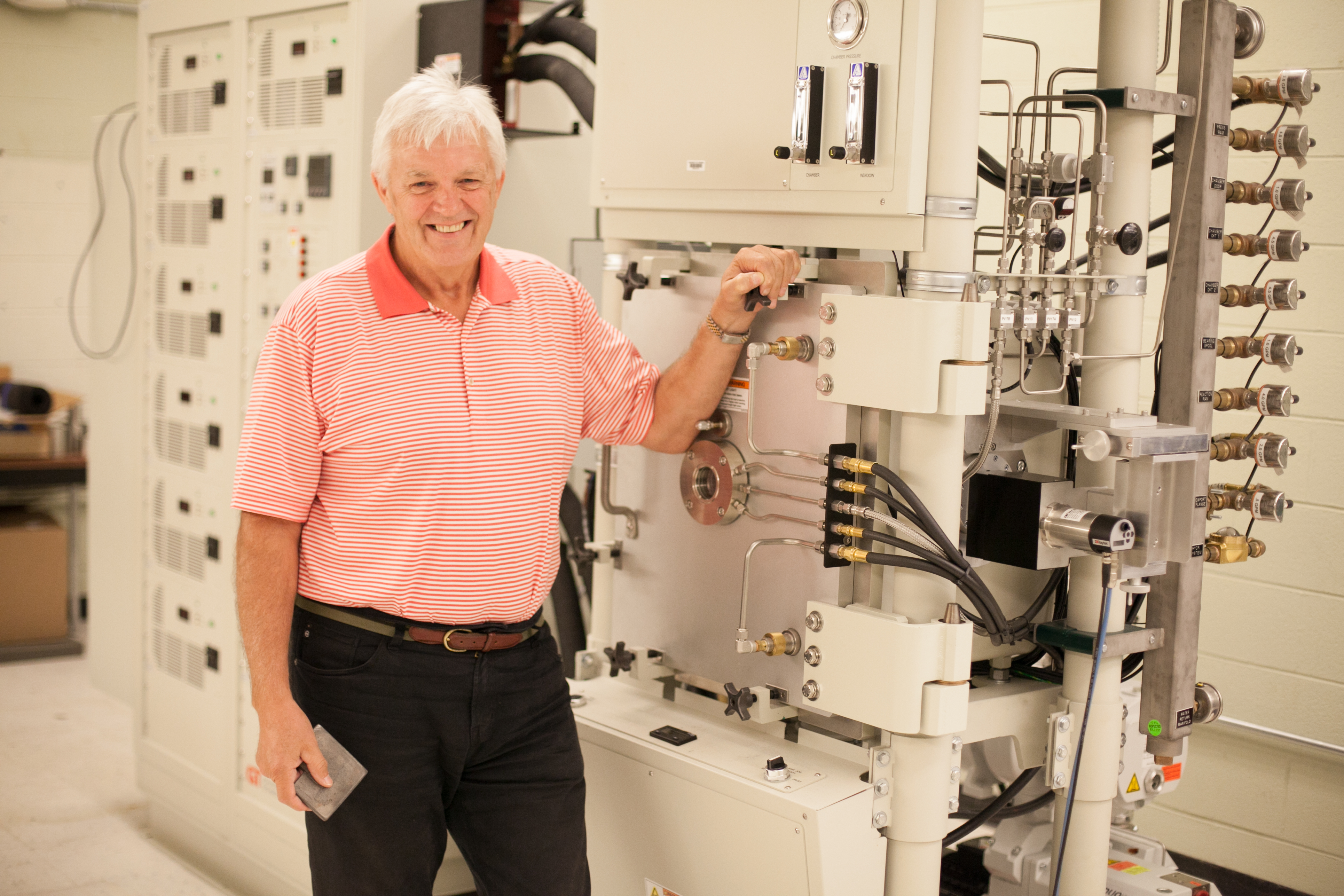"Sometimes spectacular failures inspire you to investigate the
fundamental processes that are responsible, and that knowledge then sets
the stage for designing new materials and new structures that can
survive under even more extreme conditions.”
November 13, 2015 | UVa Today | by Charles Feigenoff
“Things get pretty interesting when you take materials to their point of failure,” said Wadley, a University Professor and Edgar Starke Professor of Materials Science and Engineering at the University of Virginia. One extreme environment that has drawn Wadley’s attention is the interior of jet engines.
In 2016, the International Air Transport Association expects airlines to carry 3.6 billion passengers, the equivalent of half the world’s population. Jet engine performance affects all of those people, and increasing the performance protects the environment by reducing carbon dioxide and nitrogen oxide emissions.
Surfaces in a jet engine’s combustion chamber and in the turbine immediately behind it routinely reach 2,500 degrees Fahrenheit. At these temperatures, even the most advanced engine alloys rapidly oxidize and fail. In response, engine manufacturers coat these parts with heat-resistant materials. Over the years, Wadley’s research group has done pioneering work exploring the mechanisms that enable coatings to protect an underlying surface, determining mechanisms that cause the coatings to fail with rising temperatures, and developing longer-lasting coating materials. Wadley and his colleagues also have developed vapor deposition processes that deliver more effective coating protection.
But 2,500 degrees is not as extreme as engine manufacturers would like to go. Combustion at even higher temperatures would increase fuel efficiency and further reduce carbon dioxide emissions. They are experimenting with engine components made from ceramic composites that have tremendous strength at ultra-high temperatures. Principal among these are SiC/SiC ceramic matrix composites, named because silicon carbide is used for both matrix and fiber.
“If we want technology to continue to provide greater services for society, we need to understand failure in extreme environments and so design materials and structures that withstand them,” Wadley said.
- See more at: https://news.virginia.edu/content/extreme-challenge-award-winning-engineer-pushes-materials-breaking-point#sthash.nfYAWru9.dpuf
